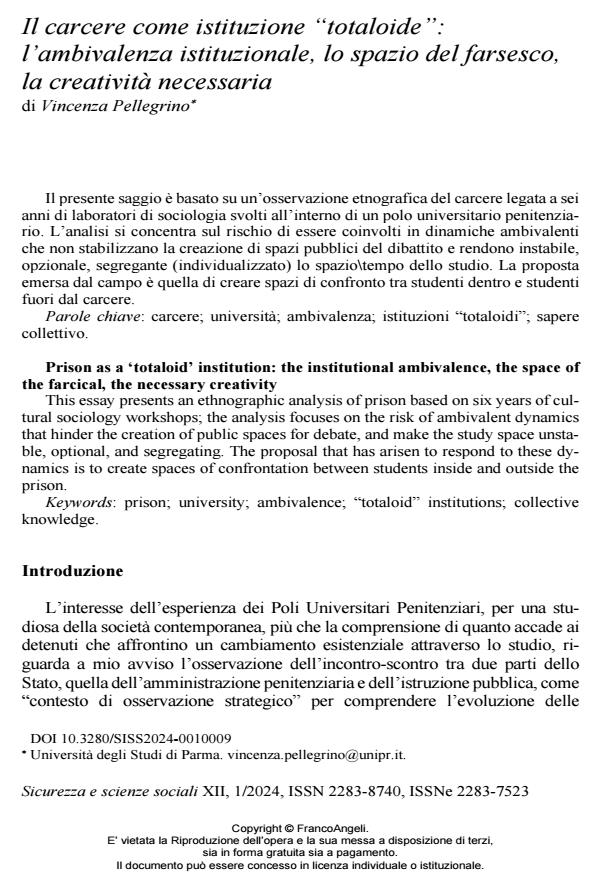Prison as a ‘totaloid’ institution: the institutional ambivalence, the space of the farcical, the necessary creativity
Journal title SICUREZZA E SCIENZE SOCIALI
Author/s Vincenza Pellegrino
Publishing Year 2024 Issue 2024/1
Language Italian Pages 18 P. 111-128 File size 247 KB
DOI 10.3280/SISS2024-001009
DOI is like a bar code for intellectual property: to have more infomation
click here
Below, you can see the article first page
If you want to buy this article in PDF format, you can do it, following the instructions to buy download credits

FrancoAngeli is member of Publishers International Linking Association, Inc (PILA), a not-for-profit association which run the CrossRef service enabling links to and from online scholarly content.
This essay presents an ethnographic analysis of prison based on six years of cultural sociology workshops; the analysis focuses on the risk of ambivalent dy-namics that hinder the creation of public spaces for debate, and make the study space unstable, optional, and segregating. The proposal that has arisen to respond to these dynamics is to create spaces of confrontation between students inside and outside the prison.
Keywords: prison; university; ambivalence; “totaloid” institutions; collective knowledge.
Vincenza Pellegrino, Il carcere come istituzione “totaloide”: l’ambivalenza istituzionale, lo spazio del farsesco, la creatività necessaria in "SICUREZZA E SCIENZE SOCIALI" 1/2024, pp 111-128, DOI: 10.3280/SISS2024-001009